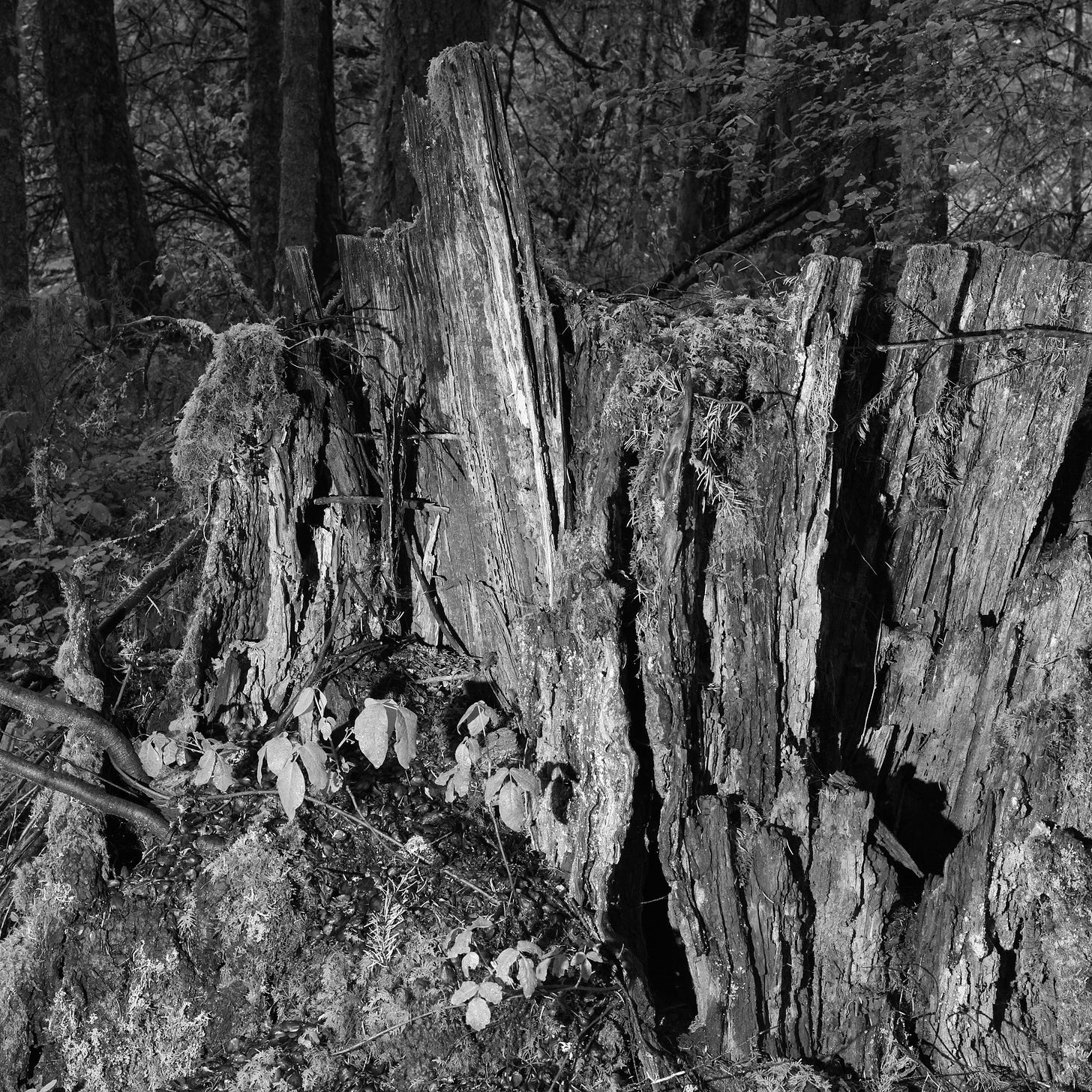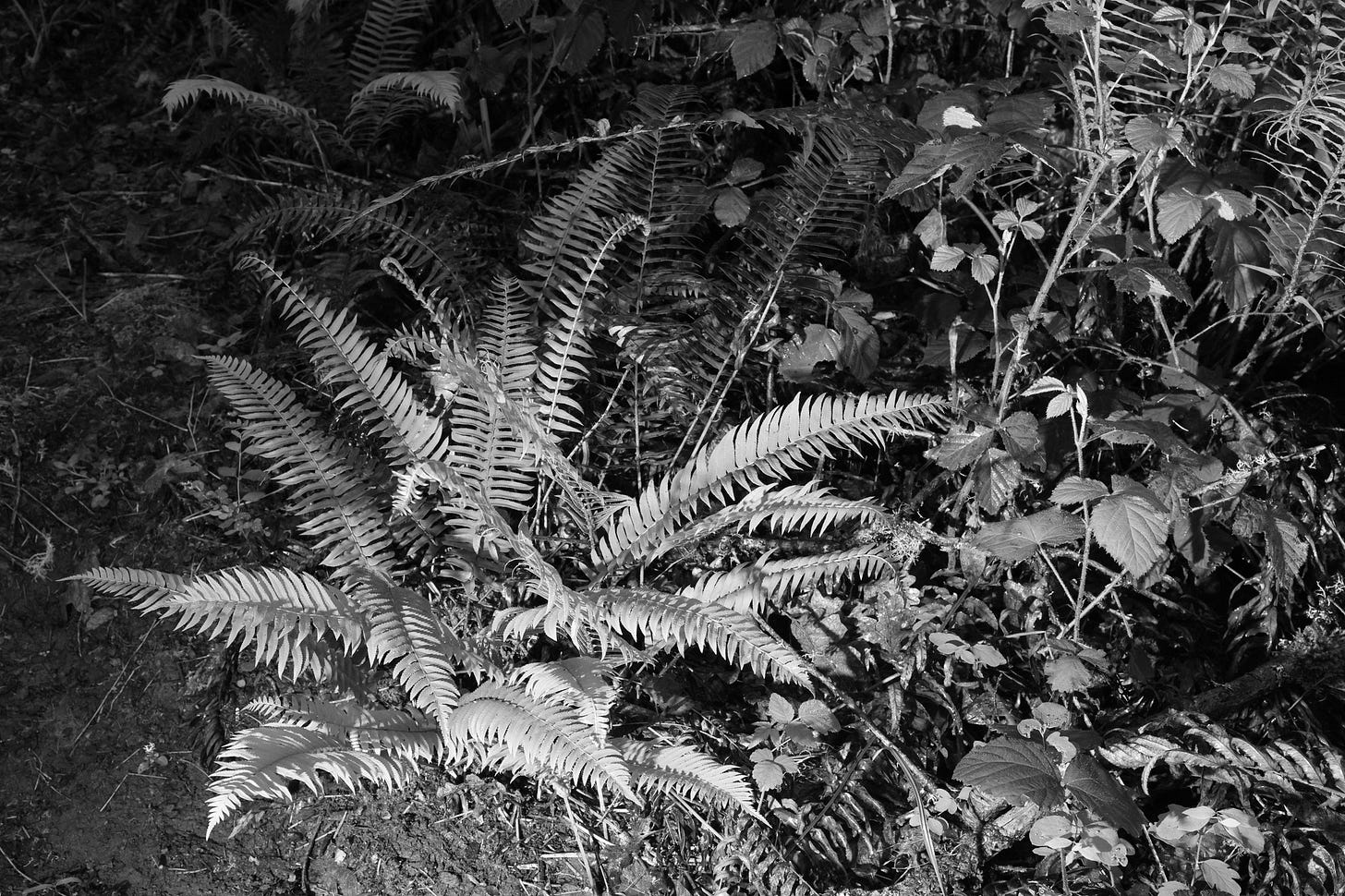Ripley Redux
My obsession with black and white photography has me rewatching a favorite Netflix series and playing, once again, with artificial lighting in the woods
All right, I confess: I’m now in the middle of watching Ripley — for the fourth time. We’re talking that spectacular eight-part Netflix series from 2024 based on the Patricia Highsmith novel The Talented Mr. Ripley. Yes, I’m obsessed with it. It’s a thing of beauty.
As I’m now halfway through the most recent viewing, that means I’ve already dedicated more than 20 hours of my life to watching a TV show. In my defense, Ripley is no ordinary Netflix project, perhaps because it wasn’t originated by Netflix, but by Showtime. Exquisitely photographed — in black and white — by Robert Elswit, who won an Oscar for best cinematography for There Will Be Blood, it’s directed by Steven Zaillian, who took the Oscar for writing the screenplay to another black and white work, Schindler’s List.
The Netflix version of Ripley is a visual playground that draws heavily on the look of classic modernist photographers from Henri Cartier Bresson and Ansel Adams to Edward Weston, Robert Frank, Walker Evans, and Diane Arbus, as well as the Baroque chiaroscuro of Caravaggio.
The series also draws on the style of film noir, with its deep shadows, strong contrast, odd shooting angles and use of silhouettes to deepen the mystery and drama.
Perhaps as a result, I woke up around three this morning, as I often do, and lay in bed thinking about my own photography in the mysterious Oregon forest. After I got up a few hours later and had breakfast, I grabbed my camera, along with a small remote controlled flash unit, and headed for the woods. Here’s one of the first pictures I shot this morning, with the help of light from the flash:
This is, by far, not the first time I’ve used artificial lighting in the woods. The first time was a little more than ten years ago when I enjoyed an artist residency at the H.J. Andrews Experimental Forest, up the McKenzie River from Eugene. I brought along a couple flash units, stands and umbrellas, and made a series of lit portraits of the many old-growth stumps you find at the Andrews, arranging the lights as you might while photographing a person. That adventure turned into a show at the sadly now-defunct Jacobs Gallery at the Hult Center.
This morning I was more spontaneous, in part because I didn’t want to carry all that gear with me. Camera in one hand, flash in the other, I walked and took photos for an hour, enjoying the ease with which a little extra light can intensify a nature photo.
It was great to use just a single small flash, but I imagine I’ll be back out in the woods soon with a flash or two on stands — and certainly with something to help soften the light, whether it’s a proper lighting umbrella or soft box or simply a rinsed out plastic milk jug over the flash. Stay tuned — more of this to come.
Now some news on exhibitions and sales
A photo from my Fire & Ice series will be in the Artworks Northwest Biennial coming up next month at Umpqua Valley Arts in Roseburg. The show includes artists from the entire Northwest, from northern California and western Montana and Wyoming to British Columbia. It opens with a reception from 4 p.m. to 7 p.m. Friday, June 6, and runs through August 15 in the elegant galleries at UVA.
Two days after the biennial opening, I’ll have work in Eugene at the 2nd Avenue Art Fest, a one-day-only sales event from 10 a.m. to 4 p.m. Sunday, June 8, at Whiteaker Printmakers, 1328 West 2nd Avenue. I plan to be there myself, so come on by and say hello.
Finally, Mindpower Gallery in Reedsport is working with me on an exhibit of my hand colored landscape photography for late this summer. The dates will be August 22 through September 26. More details as they become available.







Carole,
Good to hear from you. And yes, to the softened light, for sure!
Bob
I love results that you’re getting, and with softened light they will look even better!
Congrats on all the shows! Carole